“Are you looking for some eCommerce tips to grow your small business? If yes, then you have landed on the right post.”
Today eCommerce itself has become a large sea of opportunities. 2022 has witnessed over 12 million – 24 million eCommerce sites. This shows how eCommerce has given businesses an opportunity to broaden their customer pool and sell more.
But selling through an eCommerce site is not that easy. Even though there are so many sites, less than 1 million generate yearly revenue of 1000 dollars.
The reason is people deploy their eCommerce stores without any proper plan or strategy. Therefore, we decided to share some amazing eCommerce tips and advice that you can consider to bring a huge influx of potential buyers.
17 Ecommerce Tips For Small Businesses To Grow In 2023
The invention of new technologies and the discovery of new trends have played a major role in changing the way people do business. When the world was introduced to the first workable prototype of the Internet in the 1960s, it opened new possibilities.
It changed the way of shopping and business. In 1979, Michael Aldrich invented the first online shopping system, and commerce across the globe was reborn with the name eCommerce.
Now that we know how the online business industry came into existence, let’s shed some light on some crucial eCommerce tips for growing your business.
1. Take Time And Don’t Hurry With The Launch Process
The idea of putting your business onto a digital platform looks attractive but it’s not that simple. One of the biggest reasons for an eCommerce site’s failure is that its owners are in a hurry to launch their sites. Before launching, put in substantial groundwork related to site structure, on-page SEO elements, content strategy, marketing strategy, and so on.
Unless and until your site is ready with a user-friendly ecosystem, don’t think of launching. It’s good to buy a domain name in advance and create a “Coming Soon” page until you’re finished with the groundwork.
2. Don’t Hold Back Your Profits
It is very tempting to save all the profits made. But in the beginning, it would be smart to reinvest your profits as you are at the beginning of developing your eCommerce site. The money made should be reinvested smartly in the promotions of your store.
In the beginning, you can promote your products using social media ads. For example, you can promote your social media posts, to bring traffic to your site.
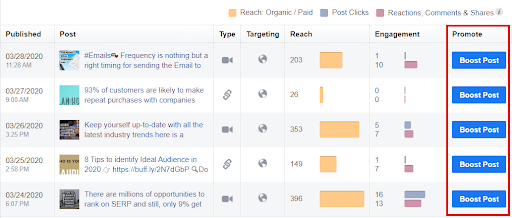
Also, you can create ads related to your products and regularly check which of your products are performing well Once you find your winning product, increase or decrease your ad spend accordingly.
3. Create A Schedule You Can Commit To
Creating a schedule will help you implement your strategies in an efficient and consistent manner. Create a schedule to which you can commit. A planned eCommerce schedule also helps in creating an urge in your customers to come back and regularly check up on your store.
For example, you can share a post on your site every weekend. This will encourage people to visit your site every week and read new content.
A consistent schedule will give you a bunch of loyal customers for your eCommerce store thus, increasing the number of potential buyers. For a small business, it is very important to bring relevant traffic, and creating a schedule can be very beneficial in doing so.
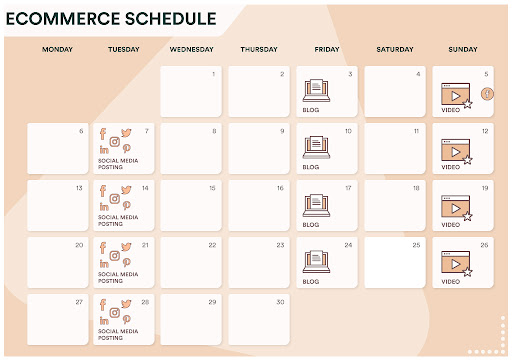
4. Use A CRM System For Better Customer Relationship
CRM or Customer Relationship Management helps you improve relationships with existing and potential customers. For small businesses, investing in CRM software is a smart approach for maximizing and nurturing leads.
Over 91% of organizations with 10 or more employees use a CRM to delight their customers and grow better. The reason behind this is that CRMs are great for managing clients, tracking profitability, and uniting your sales and marketing professionals.
Now the question is which is the best CRM software for your business?

I would like to suggest going with HubSpot which is an all-in-one business management platform. HubSpot is an eCommerce marketing and sales platform that allows you to delight customers and grow your business with the inbound approach.
Also, you’ll be surprised to know that –
There are 150,000+ customers across more than 120 countries that use HubSpot’s powerful and easy-to-use tools and integrations to attract, engage, and delight customers.
Here are some of the prominent features of HubSpot:
-
You can start with HubSpot for free. Yes, you read it right, HubSpot provides access to its CRM, marketing, sales, and customer service tools for free.
-
HubSpot’s tools are relatively simple to use and all this comes with an intuitive interface that makes it easy to get up and run.
-
With HubSpot, you get a powerful collaborative platform that centralizes all contact information.
-
Business owners can easily unite their marketing and sales professionals and build a robust lead conversion process.
Looking For Consultation On HubSpot? Talk To Our Experts Now!
5. Add Live Chat For Instant Customer Satisfaction

This is one of the most easiest and effective eCommerce tips that I can recommend to a small business owner. Live chat can be a significant improvement in the online shopping experience for a business and to prove this statement here are some stats:
-
77% of customers won’t make a purchase if there’s no live chat support.
-
For 73% of customers live chat is the most satisfying channel of communication with a business
-
Last, you’ll be surprised to know that 63% of consumers are more likely to return to a brand that offers live chat.
All these numbers indicate that a live chat helps your potential customers make a faster purchase decisions. Also, it gives your customers a feeling that they are interacting with humans and not a machine. You just have to make sure that your chat widget is in a visible spot and resonates with your branding.
4 Simple Steps For Adding Live Chat Widget To Your Website
6. Leverage Social Media For Stronger Web Presence
With 4.70 billion users in 2022, social media platforms are a great opportunity for increasing your web presence if you’ve just started with your eCommerce venture.

Social media plays a vital role for your eCommerce business in generating leads, increasing traffic, and building your brand awareness.
Platforms like Facebook and Twitter help you find and connect with your target audience and understand their needs and requirements. Platforms like Instagram help you showcase your products and attract visitors to your eCommerce site.
Also, I like to recommend showing your presence on multiple social media platforms. Marking your presence on multiple platforms is a very simple yet highly effective way to help people see your presence and be aware that there’s a company that can fulfill their demands.
7. Invest In Influencer Marketing
Influencer marketing has become more popular than ever as more and more businesses are using it for promoting their products.
You’ll be surprised to know that the global influencer marketing market value has more than doubled since 2019, standing at around 16.4 billion U.S. dollars as of 2022.

The reason behind the sudden and exponential growth of influencer marketing is that it is the fastest method of making your target audience aware of your brand.
If I have to tell you the top 3 important benefits of influencer marketing, it would be the following:
-
Firstly, it increases brand awareness
-
Secondly, helps in building a trustworthy relationship with potential customers
-
Thirdly, micro-influencer marketing has become more flexible and affordable.
In today’s world where there is so much competition in the online business world, influencer marketing is the fastest train that you can board to reach your potential customer’s attention.
8. Make Relevant Information Accessible To Customers
Giving access to relevant information to your customers such as contact details, return policies, address, etc. is very important, no matter if you’re a big or small business.

It gives your customers a relevant idea of your policies and provides them with everything they need to make an informed purchase. Create a well-informed contact page that comprises all the information needed by your customers so that they aren’t baffled upon making a purchase.
A “Contact Us” page creates a lasting impression on your visitors’ minds about whether to buy from you or not.
9. Put Work In Your Product Copy
Many eCommerce store owners undermine the importance of a good product description. As a small business, it’s very important that you put work in your product copy, right from the beginning.

The major drawback of an eCommerce store is that the products are not tangible. The only way in which one can entice the customers is through the product description. Giving a clear description of your product helps the buyers to create a vivid picture in the users’ minds.
A short paragraph can help your users understand how your product is beneficial for them and how to use it.
10. Make Your Website Visually Enticing
“First impression is the last impression”, the quote also stands true for your eCommerce store. For making a lasting impression on your visitors, the website needs to be visually appealing.
Did you know 94% of the first impressions on a website are based on its visuals and design?
Your website should define your business theme and what your products are. You can take an example from the leading giants in your industry. If your products stand for masculinity, you can create a page like Dollar Shave Club, if your products are customer-centric then you can have something like the Disney store, and if you want a marketplace you can take references from Amazon.

11. Rank On Top With SEO
It doesn’t matter if your business is small or big, the thing is your profitability only depends on whether your customers are able to find you or not. In the digital world, buyers can reach your eCommerce store only if it ranks on the SERPs when they search for a query.
Herein comes the role of Search Engine Optimization (SEO), to rank you on top of search engine result pages. 2021 alone has witnessed over 4,500 million global internet users.

Out of this, 39% of all global eCommerce traffic comes from searching a query using a search engine. Also, when compared to paid ads which require constant effort and money, SEO is much more cost-effective. SEO and content marketing are much more feasible to start with if you are a small business as it has a negligible monetary investment.
12. Get Feedback From Your Audience
In the beginning phase of the eCommerce business, it is very important to get feedback from your audience. Customer feedback is an important piece of information that tells you how customers feel about your products or services, giving you a general idea about their experience with your company.
Here are some reasons to justify the importance of customer feedback:
-
Customer feedback shows what your product is lacking and what exactly is expected from your product.
-
Using rating-based questions in your feedback measures customer satisfaction with your products and services.
-
Feedbacks make your customers feel valued as you’re asking for their participation in improving your services through their opinions.
-
Customer feedback also helps with improving customer experience. In this digital age where products have transformed from physical elements to intangible bits and bytes, customer experience plays an important role in every step of buyers’ journey.
-
Customer feedback improves customer retention, for a simple reason, a satisfied customer will always be loyal to your brand.
-
Feedback is also a reliable piece of information for other buyers. With changing times, buyers are also becoming smart and instead of making loose guesses, they prefer to use data before purchasing from you.

-
Customer feedback is also important for making business decisions. Where there’s high competition in the market, customer feedback is one such tangible data to help you understand your customers profoundly.
13. Make Your Site Easy To Navigate
Lumping all products in a single category might feel tempting when you have very few products in the beginning. But as your store grows, you’ll want to organize your products into categories for your user.
Companies spend huge amounts on bringing visitors to their sites. For companies like Amazon, marketing expenditure amounted to 32.6 billion U.S. dollars in the 2021 fiscal year.

But all this would have gone in vain if Amazon’s visitors landed on a site with complex navigation. When a company like Amazon has understood the fact that proper site navigation is very crucial for guiding the user leading to checkout, you should follow. Thus, as a startup, it will be smart enough to categorize your products smartly for an enhanced user experience.
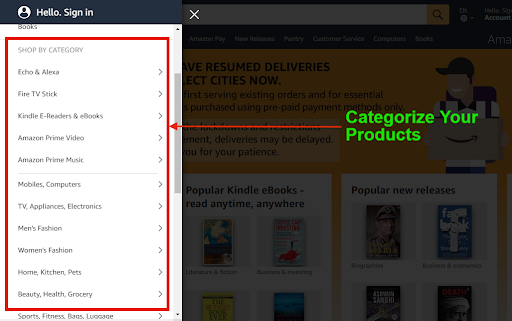
Here are some basic tips for optimizing your eCommerce site navigation:
-
Add autocomplete to your search bars. Autocomplete helps in preventing spelling mistakes, narrows down your search, and speeds up the process of searching.
-
Add filters and subcategories for better organization of products. You can also make use of faceted navigation to make a product more easily searchable. Below is an example of eCommerce facets:

-
Make use of fat footers. Fat footer is used by many eCommerce businesses like GrubHub to give a quick view of their site on the homepage.

-
Display your subcategories under the same parent category for better reachability of your products. Have a look at Best Buy’s drop-down menu:

Adding the subcategories under the same parent category can increase the findability of products from 29% to 74%.
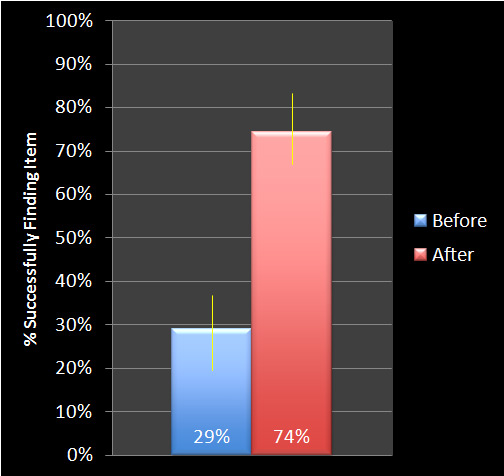
So these were some tips on how you can make your store look more organized and easily navigable for the user.
14. Marketing Should Be Your Focus
If you’ve just started out with your eCommerce journey, marketing should be your focus. People often invest their major energy in beautifying their stores, but it is marketing and advertising that brings in money. Marketing will help you in acquiring customers and increase your brand value.
Here’s what you can do if you’ve just begun thinking about your marketing strategy:
-
Actively post your updates on social media platforms.
-
Try building connections with influencers that fall into your niche.
-
Contribute content on high authority sites to get some quality backlinks, that’ll bring quality referral traffic to your sites.
-
Post unique, relevant, and valuable content on your site regularly; it’ll help in ranking your site.
-
Create a budget for advertising.
-
Experiment with different odds for finding more customers.
15. Incentivize Your Regular Customers
In the end, it’s the customers that make or break you as a business. Hence, it‘s very important to incentivize your regular customers. Customer acquisition is just one part of the business, the other part is customer retention. The success of your eCommerce business is counted by the number of loyal customers you can retain.
Understand it from Pareto’s principle, it says 80% of your sales come from 20% of your customers. Thus, it’s very important to have loyal customers. Rewarding your regular purchasers makes them feel valued and it shows how important they are to your store.
Let’s have a look at some of the numbers for customer loyalty to make it look even more convincing:
-
Just an increase in 5% of loyal customers can lead to a profit of 25%-100% in profit per customer.
-
Loyal customers are 10 times more valuable than first-timers.
-
69% of the customers’ choice of retailers is influenced by the reward points.
eCommerce tips for rewarding loyal customers:
-
Make use of digital cards or coupons, that can be easily downloaded without any hassle, and your buyers can receive an instant discount.
-
Offer small gifts at quick intervals. Use a perfect combination of timelessness and generosity to incentivize your purchasers and bolster your brand image. For example, instead of giving them a free or discounted gift after every ten purchases, minimize it to five purchases.
-
Take care of your email subscribers and social media followers. They might not fall into the category of biggest shoppers but are loyal to your brand. Provide them exclusive discounts as a token of their loyalty.
-
Use your current customer base for acquiring new ones. Take the example of Airbnb which uses referral marketing as a channel to increase its prospect network. Airbnb asks its active travelers to invite their friends to their platform, and if their friends sign up using their referral code, the active travelers receive an instant discount.
-
Tap your customer data for visualizing their behavior in your store, like what they buy, how much time they spend, which category they browse most of the time, etc. The customer data will provide you with useful insights for creating a targeted reward strategy for your customers.
16. Implement Upselling And Cross-Selling
As a new eCommerce venture, it is very thrilling to see your first sale coming. However, cross-selling and upselling are two techniques that can amplify your buzz even more. First, let’s understand them separately:
What is upselling?
Upselling is a sales technique that compels the user to spend more by buying a premium or upgraded version of what is being currently purchased.
For example, A customer purchasing an air ticket is prompted to upgrade to a first-class seat during his airline check-in process.
What is cross-sell?
Cross-selling is a sales technique that makes the customer spend more by purchasing an additional product related to their current order.
Remember the question, “Would you like some fries or shake to go with your burgers?”, this is what cross-selling is.
Both techniques are combined to optimize your eCommerce revenues by making a customer spend more.
Online retailers rely on upselling and cross-selling strategies because:
-
The probability of selling to an existing customer is much more than a new prospect.
-
Upselling and cross-selling are often misunderstood as cheap tactics to make more sales, instead, these techniques help both the customer and retailer by creating a win-win situation.
-
Upselling and cross-selling lead to an increased Customer Lifetime Value.
-
They add value to a customer and make them return to your store to buy more.
-
Upselling and cross-selling can bring you a huge influx of money if done currently. Upselling is projected to be 190 million dollars as additional revenue for JetBlue in 2014. Amazon attributed up to 35% of its sales to cross-sales.
Upselling Best Practices
-
Do not recommend a product or- service that is too expensive for the current one.
-
Don’t become pushy, accept “no thank you” responses from your customers.
-
Focus on the needs of the customer and add value to his or her buying journey.
-
Upsell when appropriate; pre, post, or during checkout. Never miss an opportunity.
-
Show clear comparisons between the product you upsell and the product being purchased for the customer to make a decision.
-
Educate the customer on the advantages of buying the upgrade and the risk of going with the current product.
Cross-selling Best Practices
-
Recommend a product that can bring more efficacy to the current product.
-
Make use of bundles. Bundle is grouping related accessories so that the buyer does not have to browse them separately in your store.
-
Offer a discounted price on bundles to encourage immediate purchase.
-
Make use of other potential buyer objections such as “buyers also bought”, to make it easy for the customer to say yes to your cross-sell offer.
17. Go Mobile
Yes, mobile phones are the next big opportunity to skyrocket sales of your eCommerce store. The number of global smartphone users today surpasses three billion and is expected to grow by several hundred million in the coming years.
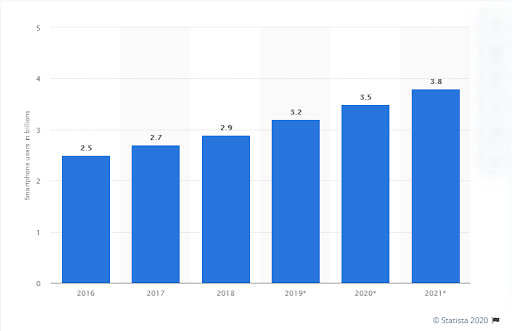
As per the stats, mobile devices are the next big place where users are present. People are spending most of their time shopping online. Here are some more numbers that show on average women spend 2.05 and men spend 1.38 hours a day shopping online.

So do you think you were there when people were online, browsing through their products?
A mobile-friendly eCommerce site plays a very important role in increasing sales and bringing in huge revenues.
eCommerce tips for satisfying your small screen buyers:
-
When working with small screens, simplicity is your best friend. As per a survey by Statista, mobile users spend a minute less on average for browsing than desktops. This means you have a fairly low time in creating a positive buying experience. Thus, create a simple site that displays your products in a composing yet non-intrusive manner.
-
For mobile users, you’ve to make sure that your site is not overloaded with too many popups and banners. It can harm the experience of the visitor and can make you lose potential customers.
-
While developing the mobile interface for your eCommerce store, keep the Thumb Zone in mind. Place the essential elements of your eCommerce store within the reachable zone of the users. Take an example from the following heatmaps created from various iPhone screens:
 The “natural” zone is the one where you can place the essential components of your eCommerce platform for better user interaction.
The “natural” zone is the one where you can place the essential components of your eCommerce platform for better user interaction. -
One of the top reasons why people love shopping online is convenience. Thus, provide the buyers with an easy, fast, and smooth checkout system to reduce abandoned cart rates.
-
Make use of micro-interactions in your mobile platforms like rating, swiping down to refresh data, and liking a product. Microinteractions make your store feel smooth and natural.
So these were some eCommerce tips that can help you if you’ve just started to think about taking your business online. But let’s hear it from some of the industry’s sharpest minds that will help you even more in bringing an influx of business to your eCommerce store.
E-commerce Expert Advice
We saw some eCommerce tips that can help you increase your brand’s awareness and give your customers the experience they deserve. Now I would like to share some advice that comes directly from the brains of eCommerce experts.
1. Gain Consumer Confidence – Crucial For Long-Term Growth

Glori Blatt – Marketing Communications manager at Salsify, in her article “The 3 Pillars of Consumer Confidence” says,
Consumer confidence is crucial to long-term growth and shortcuts aren’t an option. However, those retailers and brands that pursue honesty, accuracy, and consistency will see extraordinary long-term results.
In her article, Glori quoted a study by Forbes which says, 81% of consumers’ purchase is directly influenced by people whom they trust like their family members, friends, etc.
Thus, Glori says consumer trust should be your first strategy so that they share their positive experiences with friends and family and let you gain consumer confidence which is necessary for long-term growth.
2. Offer Great After-Sale Service – For Repeat Sales
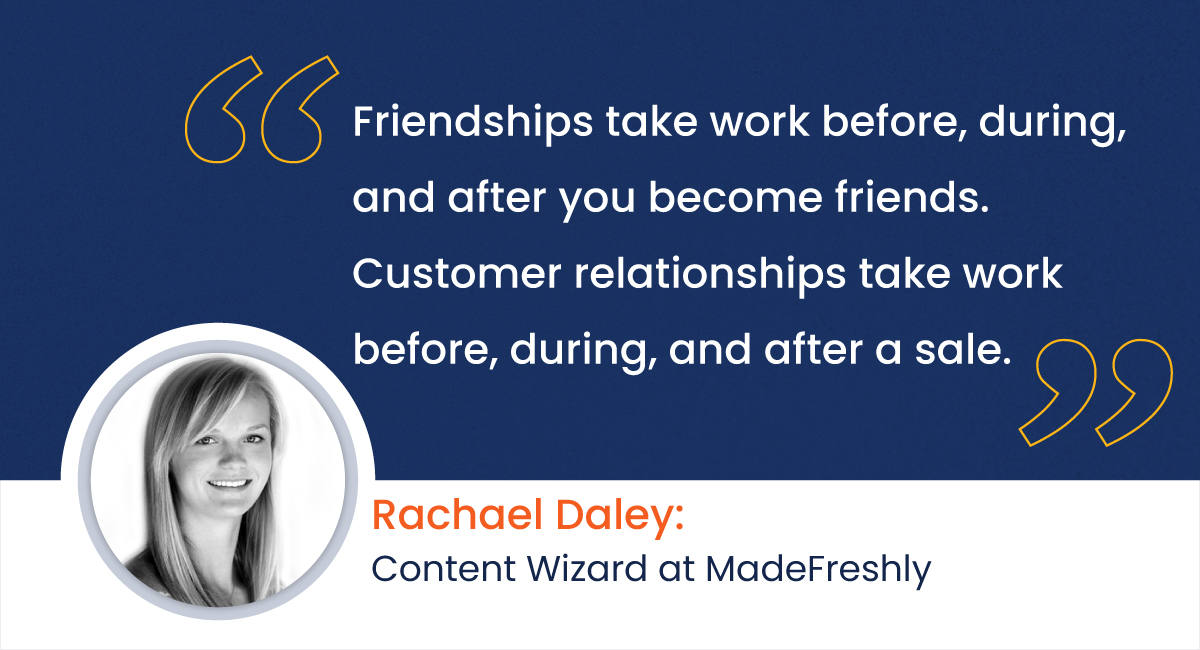
Rachael Daley – Content Wizard at MadeFreshly, in her guest post, “The Secret to Getting More Repeat Customers”, says,
In her article, Rachael has compared customer relationships to friendships. She says,
Friendships take work before, during, and after you become friends. Customer relationships take work before, during, and after a sale.
As per Rachael, building relationships with your customers, even after the sale is made, is crucial for doing repeated business. 70% of buying experiences are based upon how customers feel they are being treated.
In order to achieve this hunky-dory relationship with the customer, you have to:
Answer all questions and respond to comments quickly! Staying on top of your social media, emails, and site comments is one of the easiest ways to continue the relationship post-sale.
3. Products Come And Go But Experience Stays

Dough Stevens, the founder of Retail Prophet and author of “The Retail Revival”, believes in selling an experience, not a product because products come and go but what stays is the experience of the buyer.
Here is his number one advice which he gave in the Shopify Article:
Assume that no one really needs what you sell because they probably don’t. In a little over 25 years, we’ve gone from an economy based on scarcity of goods and services to one that offers unimaginable abundance. There’s very little you can sell that can’t be gotten elsewhere. Focus instead on how you sell what you sell. Completely differentiate your customer experience and make sure it’s remarkable.
Never tell your audience how good your product is or how better your product is than the alternatives in the market. Instead, focus on telling people how your product or service can add value to their lives.
4. Remarket Your Visitors
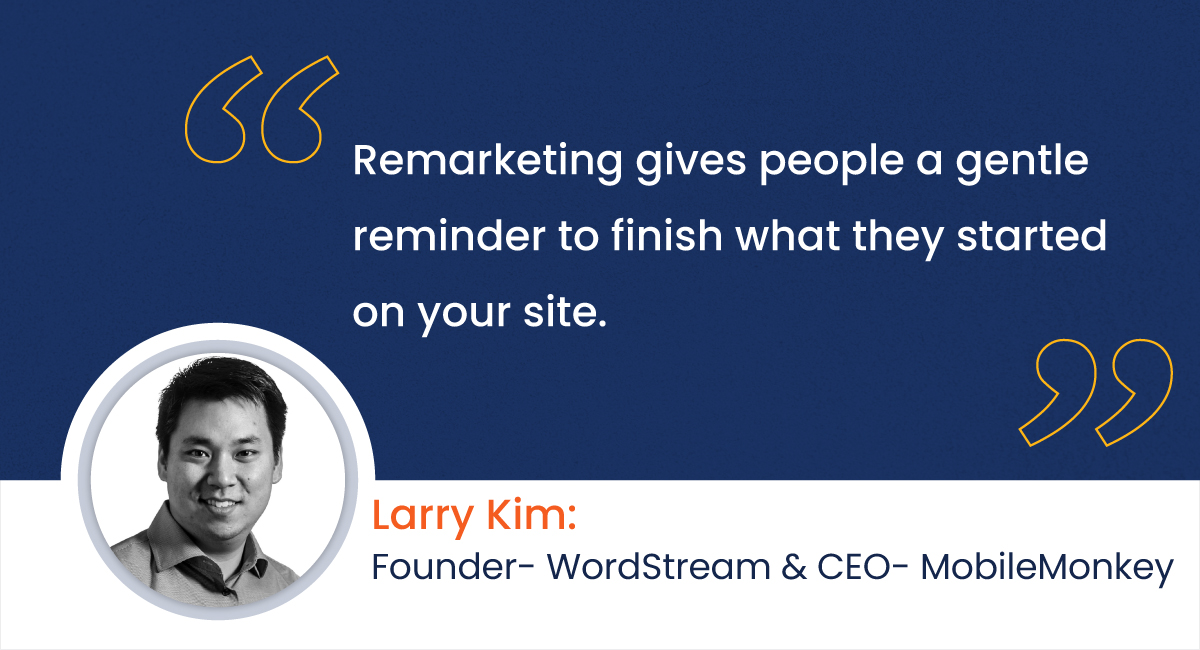
As per Larry Kim, founder of WordStream and CEO of MobileMonkey, remarketing is an awesome technique for boosting conversion rates. In his article, he explains how he has been using remarketing at WordStream since 2012 and spent over $500,000 to skyrocket his revenues.
Larry states:
Understand that people are busy and have other stuff going on in their life. Remarketing gives people a gentle reminder to finish what they started on your site while reinforcing your branding and messaging to that user every time they see you around. They’re getting to know you, and learning to trust you, and when they finally do have a free moment, they are increasingly likely to do business with you.
As per his observations, conversion rates actually increase through users that see an ad within remarketing campaigns.
5. Leverage User-Generated Content For Sustainable Growth

First let’s see what Tomer Tagrin, co-founder and CEO of Yotpo, says about user-generated content:
Brands with strong user-generated content marketing campaigns will enjoy much more sustainable growth than their competitors. If you are able to engage customers and generate authentic content that is transparent, socially integrated, personalized, data-driven, and insightful, you will lead your businesses into success.
User-Generated Content is the most useful yet free form of content you can ask for. To add the cherry on the cake, it is authentic and trustworthy because it is created by your fans and influencers.
Tomer firmly believes that user-generated content marketing is a game-changer. The reason behind this is that shoppers have become smart enough to sense branded content, thus they respond better to customer-created content.
A shopper believes in another shopper and not a brand.
Conclusion
eCommerce has made it easy for business owners to explore new opportunities but has also snatched the physical tangible experience of a product from the customers.
Thus, user experience really matters for eCommerce stores. With the proper functionality, you can let your customers virtually experience your products, shown in the form of bits and bytes.
What matters is how users feel when they visit your store. Are they able to feel your product through their visionary senses, are they able to understand what your product does, or are you able to provide them with the related product?
Building a perfect eCommerce website alone will not help, you need to build trust between the visitors. This trust will help in the long run by building a brand out of your organization, like Amazon and Zappos.
Now I would like to hear from you if there are any timeless eCommerce tips that I’ve missed. Please let me know in the comment section.

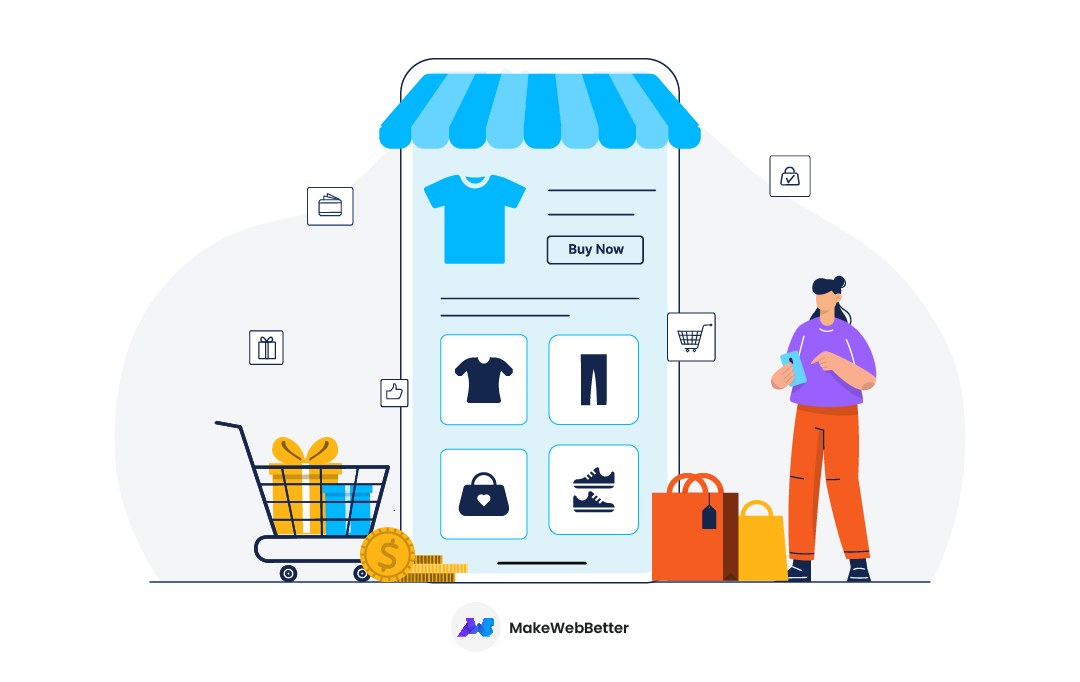

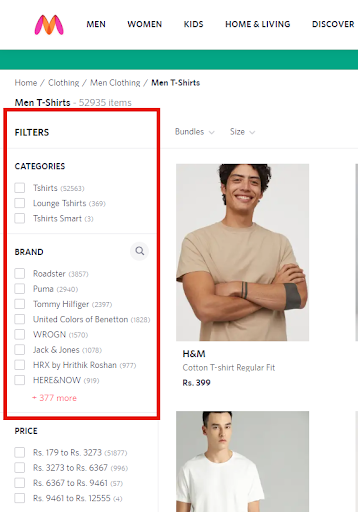
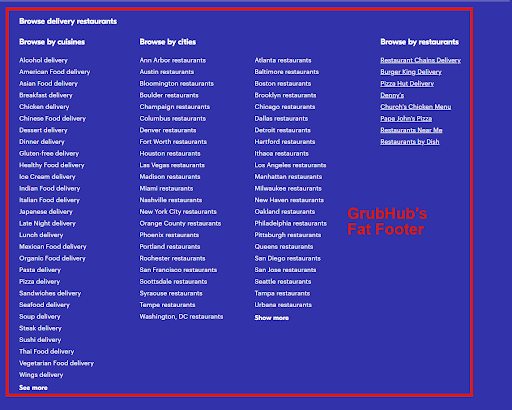
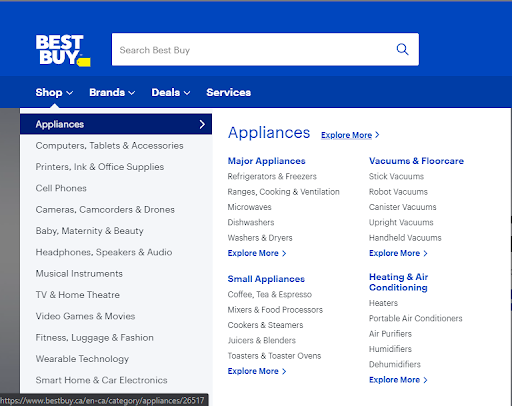
 The “natural” zone is the one where you can place the essential components of your eCommerce platform for better user interaction.
The “natural” zone is the one where you can place the essential components of your eCommerce platform for better user interaction.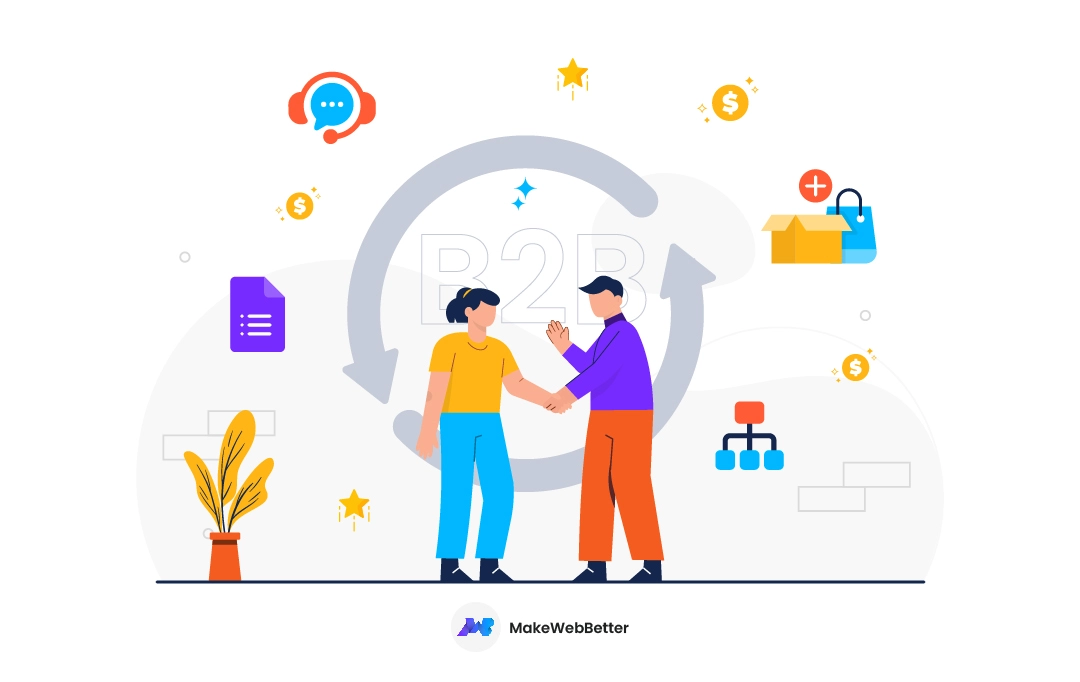
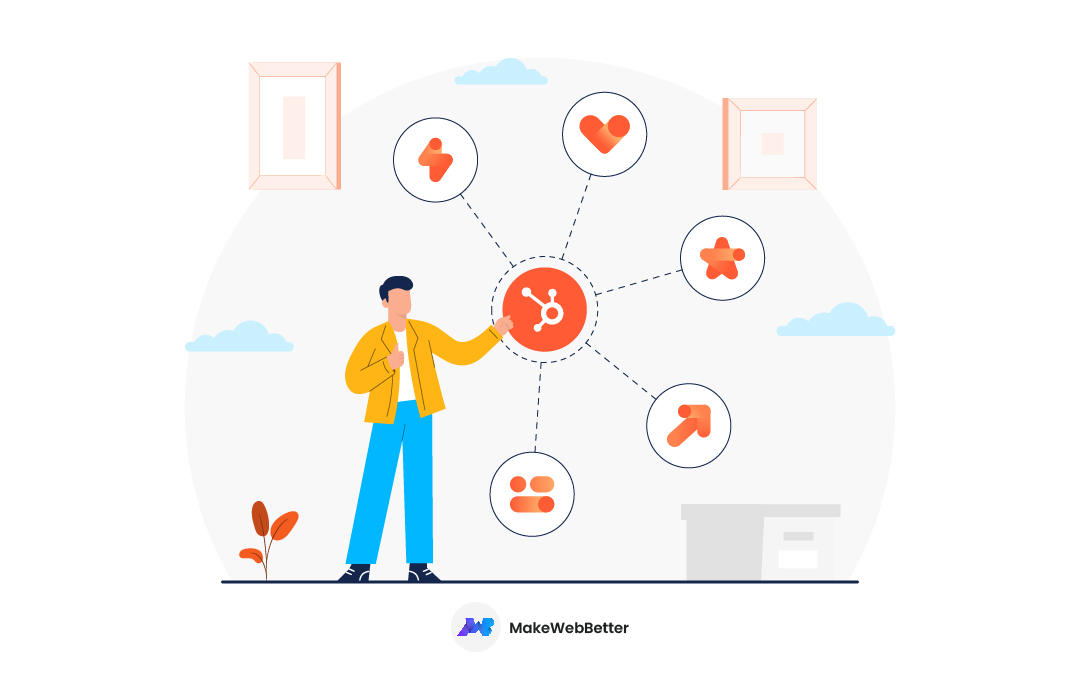
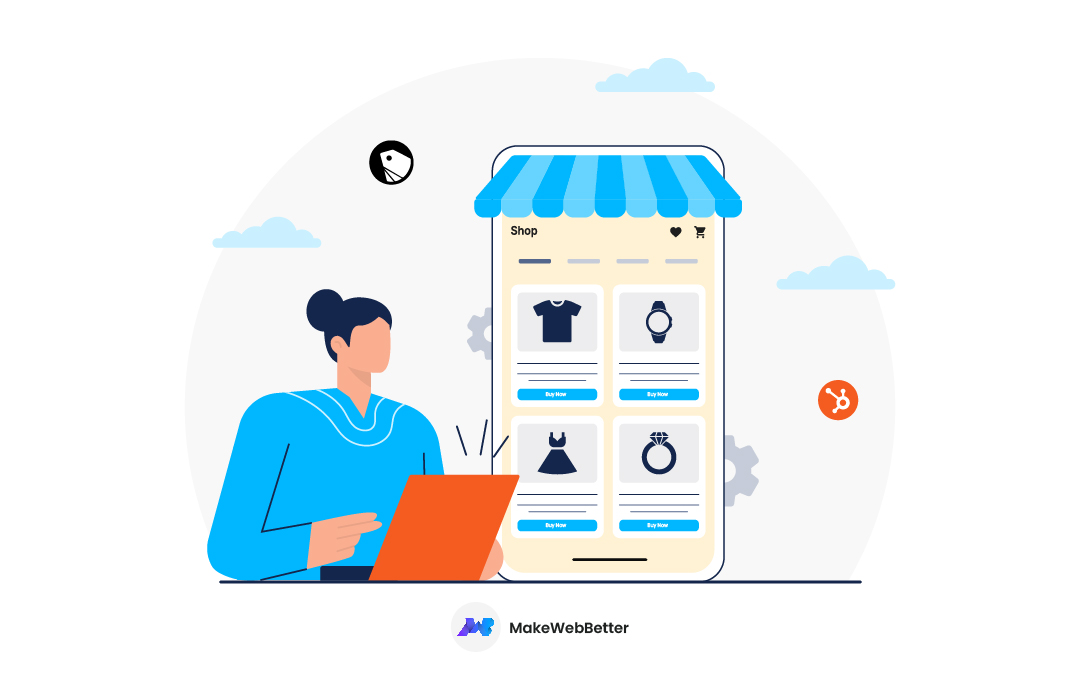




It’s no surprise that customer support plays a crucial role in the smooth sailing of any business. However, having an in-house team that provides round-the-clock services can be expensive – especially with all the infrastructure and technology required.